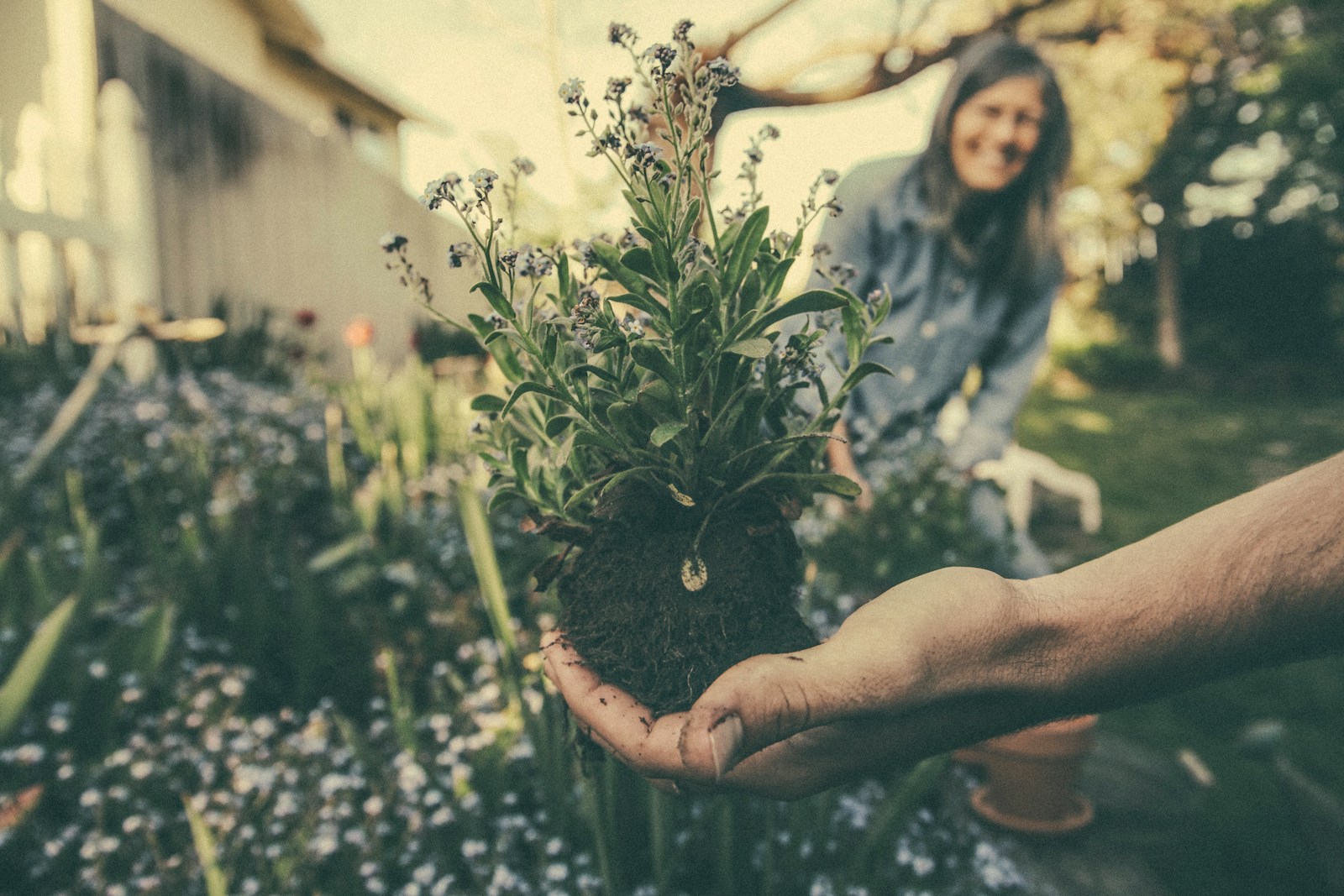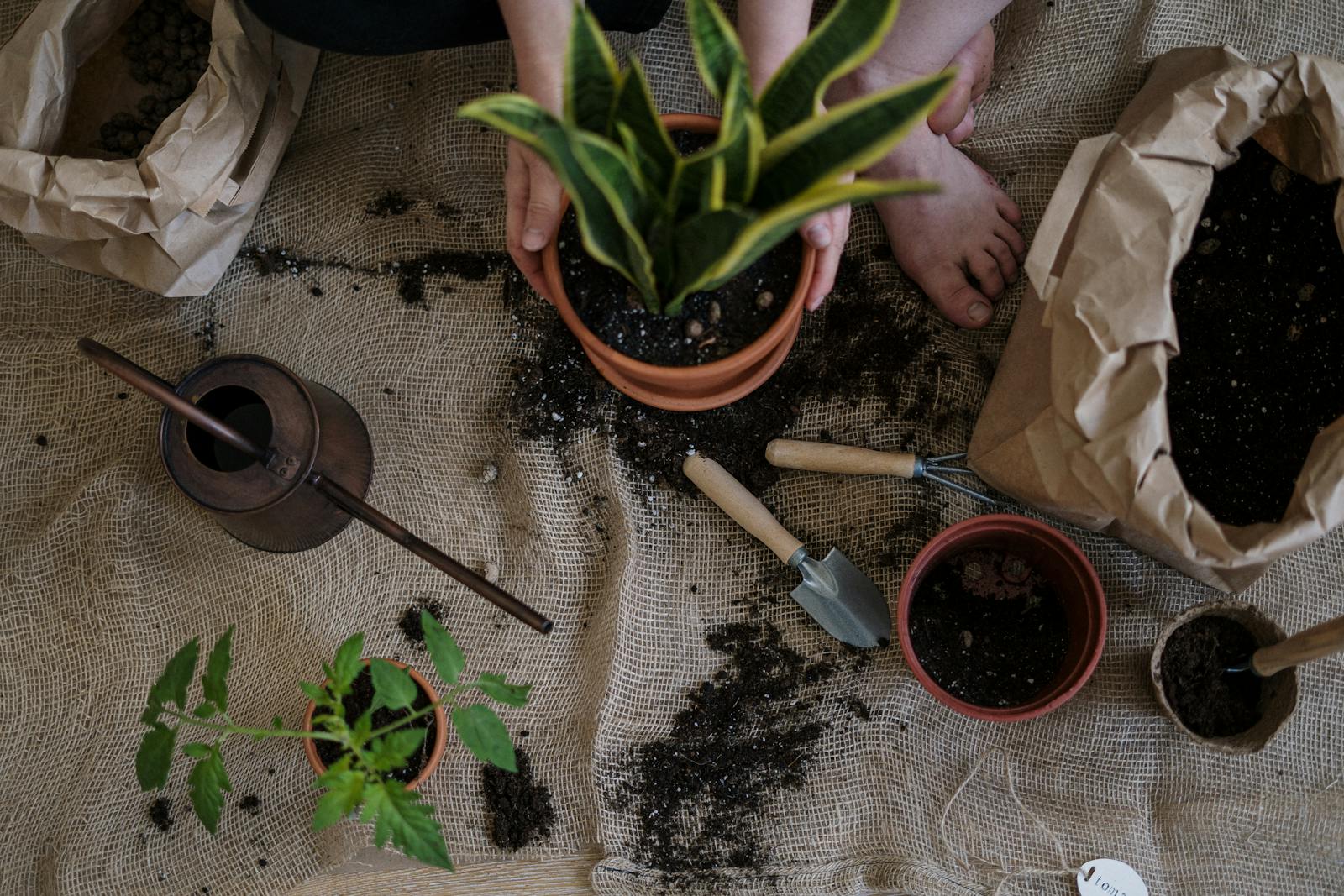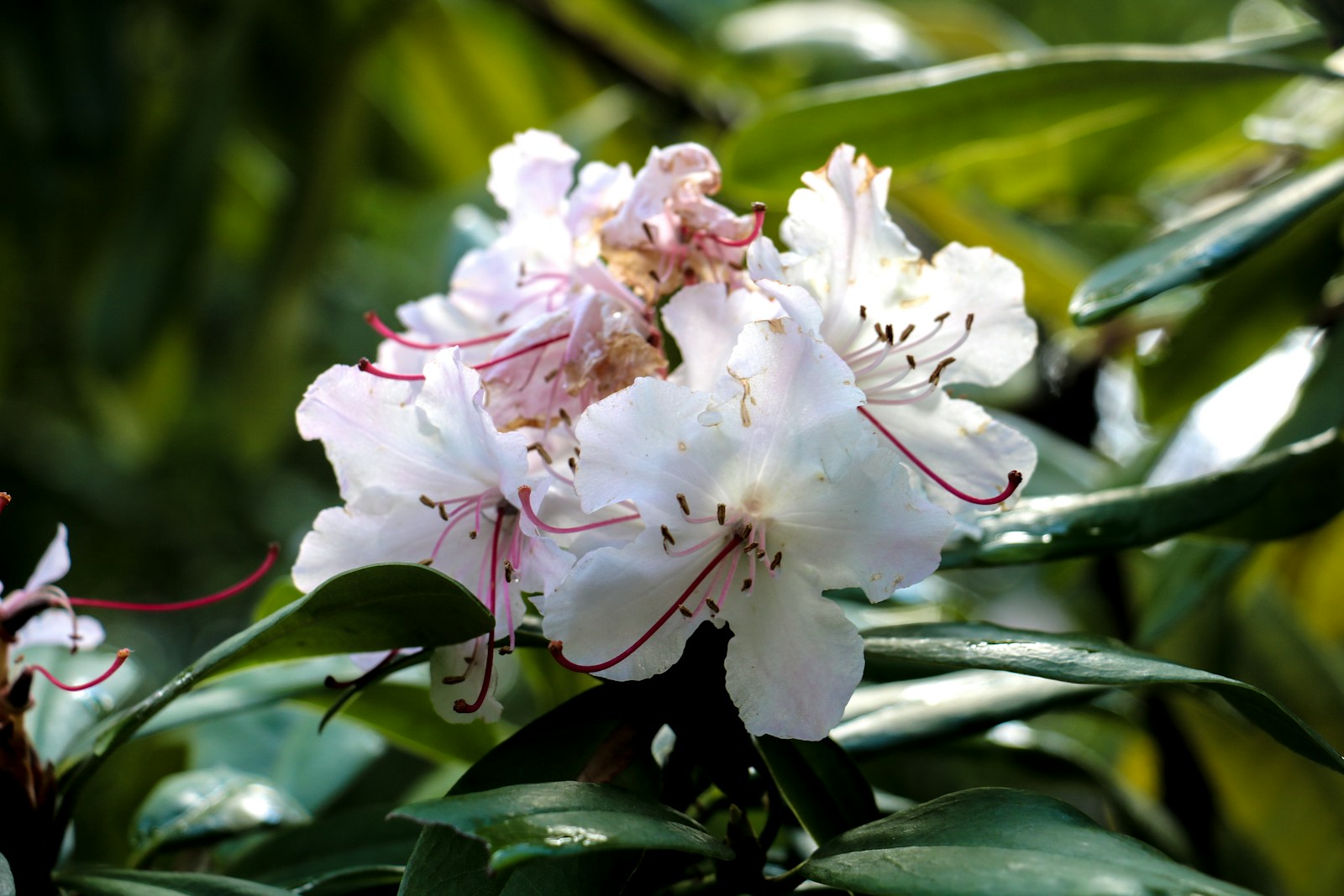Common Gardening Mistakes to Avoid
Skipping Soil Preparation
One of the top gardening mistakes to avoid is neglecting your soil. Healthy plants start with healthy soil, but too often gardeners jump into planting without testing or amending it. Poor soil can lead to weak roots, stunted growth, and disease-prone plants.
Start with a simple soil test to check pH and nutrient levels. Then, improve your soil with compost, organic matter, or specific amendments as needed. Preparing your soil properly ensures your plants have the foundation they need to thrive all season long.
Overwatering or Underwatering
Watering seems simple, but it’s easy to get wrong. Overwatering can drown roots and cause rot, while underwatering leads to dry, stressed plants. One of the most common gardening mistakes to avoid is inconsistent watering, especially during heat waves or rainy periods.
Check soil moisture by sticking your finger into the soil about an inch deep. If it feels dry, it’s time to water. Early morning watering helps prevent disease, while mulch keeps soil moist longer. Learning your plants’ specific needs is key to consistent success.
Planting Without a Plan
Gardening without a layout or plant plan can result in overcrowding, poor sunlight access, and wasted effort. Many beginners underestimate how large plants will grow or forget to group by light and water needs. These are key gardening mistakes to avoid if you want a productive, manageable space.
Sketch your garden before you plant, noting sun exposure and plant sizes. Keep taller plants at the back (or north side) and leave walking paths to access every area. Planning in advance saves time and makes your garden easier to maintain.
Ignoring Plant Spacing Guidelines
Spacing is more than aesthetic—it’s essential for healthy growth. Overcrowded plants compete for water, light, and nutrients, leading to stunted growth and increased disease. Ignoring spacing guidelines is one of the most avoidable gardening mistakes.
Always read seed packets or plant tags to understand how much space each variety needs. Resist the urge to plant too closely, even if the space looks sparse at first. Your garden will fill in—and your plants will thank you with better yields and fewer problems.
Choosing the Wrong Plants for Your Zone
Every plant has an ideal climate range. Choosing plants that aren’t suited to your region’s temperatures and growing season is a frustrating and preventable gardening mistake to avoid. Plants that don’t match your hardiness zone may struggle, fail to bloom, or die off entirely.
Use your USDA plant hardiness zone as a guide, and select varieties that are labeled as zone-appropriate. Local garden centers often stock plants suited to your area. Matching plants to your zone ensures better survival rates and stronger seasonal performance.
Neglecting Pest and Disease Prevention
Waiting until pests or disease appear before taking action is one of the most damaging gardening mistakes to avoid. Infestations can spread quickly, damaging plants and sometimes ruining entire harvests. Prevention is easier and more effective than cure.
Inspect plants regularly for signs of trouble—chewed leaves, discoloration, or stunted growth. Use natural deterrents like neem oil, insecticidal soap, or companion planting to ward off common pests. Keeping your garden clean and rotating crops also helps prevent recurring issues year after year.
Using the Wrong Fertilizer
Fertilizing is essential, but using the wrong type or quantity can do more harm than good. Beginners often over-fertilize or use general-purpose fertilizers without considering specific plant needs. This is one of the most overlooked gardening mistakes to avoid.
Start with a soil test to determine what nutrients your soil lacks. Then choose a fertilizer formulated for your plant types—vegetables need different nutrients than flowering annuals. Apply according to the package instructions and never exceed the recommended dose. Less is often more when it comes to feeding your garden.
Overlooking Mulching Benefits
Skipping mulch might seem like a time-saver, but it’s actually one of the more costly gardening mistakes to avoid. Mulch plays multiple roles: it retains soil moisture, suppresses weeds, regulates soil temperature, and adds organic matter as it breaks down.
Apply 2–3 inches of organic mulch—like straw, shredded bark, or compost—around your plants, leaving space around the stems. Mulching improves plant health, reduces watering frequency, and minimizes weed management. It’s one of the simplest ways to boost garden performance with minimal effort.
Failing to Rotate Crops Each Season
Planting the same crop in the same spot year after year depletes soil nutrients and encourages pests and diseases specific to that plant. Crop rotation is an essential practice for vegetable gardeners, and ignoring it is one of the long-term gardening mistakes to avoid.
Group crops into families (e.g., nightshades, legumes, brassicas) and rotate their placement annually. This improves soil health, balances nutrient use, and reduces the likelihood of pest and disease build-up. Keep simple notes or a garden journal to track your rotations each year.
Ignoring Sunlight Requirements
Every plant has a preferred amount of sunlight. Placing full-sun vegetables in shady spots—or vice versa—is a common gardening mistake that limits productivity and plant health. Understanding light needs is essential for a successful layout.
Observe your garden throughout the day and track sun exposure. Choose plants labeled for “full sun” only if the area receives 6–8 hours of direct light. Shade-tolerant plants will struggle in intense sun and may become scorched. Matching plants with their light needs leads to stronger growth and fewer issues.
Harvesting Too Early or Too Late
Timing your harvest is crucial to get the best flavor and yield. One of the most disappointing gardening mistakes to avoid is picking vegetables or fruits too early—or leaving them too long. Harvesting too soon can result in bland or underdeveloped crops, while overripe produce may spoil or attract pests.
Learn the signs of ripeness for each plant, such as color, size, and firmness. Harvest in the morning when plants are most hydrated and try to check your garden daily during peak season. A well-timed harvest rewards your hard work with fresh, delicious results.
Failing to Label Plants Clearly
Skipping plant labels might seem harmless, but it’s one of the small gardening mistakes to avoid that leads to big confusion later. Forgetting what you planted—and where—can result in overwatering, incorrect fertilizing, or unintentional removal of seedlings.
Use weatherproof labels and write the plant name, variety, and planting date if possible. You can make markers from craft sticks, stones, or recycled materials. Labeling keeps your garden organized and lets you track performance more easily from season to season.
Relying Too Heavily on Store-Bought Soil
Bagged soil can be convenient, but it’s not always the best choice for long-term gardening. Relying solely on store-bought mixes is one of the sneaky gardening mistakes to avoid—especially if they’re low in nutrients or poorly draining.
Improve any bagged mix with compost or aged manure before planting. If you’re working in the ground, prioritize amending your native soil instead of covering it with potting mix. Rich, living soil is built over time, and starting with a strong base pays off with healthier plants.
Not Learning from Past Seasons
One of the easiest gardening mistakes to avoid is failing to reflect on what worked—and what didn’t. Gardening is a learning process, and keeping notes on planting times, yields, pest problems, and weather patterns can dramatically improve your results year after year.
Use a garden journal, calendar, or app to track key events. Review your notes before the next season to refine your approach. Continuous learning makes gardening more rewarding and helps you avoid repeating the same mistakes.
Trying to Do Too Much Too Soon
Starting with an overly ambitious garden is a common pitfall. It can quickly lead to burnout, missed tasks, and frustration. Scaling too fast is one of the most preventable gardening mistakes to avoid for beginners and even experienced growers.
Begin with a manageable space and a few plant varieties. Focus on learning as you go and expanding as your confidence grows. Gardening is more enjoyable—and more successful—when it feels like a pleasure, not a chore.
Frequently Asked Questions
What are the most common gardening mistakes to avoid?
The most common gardening mistakes to avoid include overwatering, planting without a plan, ignoring soil quality, and choosing the wrong plants for your climate. Other frequent missteps involve skipping pest prevention, overcrowding plants, and neglecting to mulch. These errors can lead to poor plant health, reduced yields, and unnecessary frustration. By planning carefully, testing your soil, and selecting zone-appropriate plants, you can prevent most beginner issues. Learning from each season helps you build better habits for long-term gardening success.
How do I know if I’m watering my garden correctly?
To water your garden properly, check soil moisture by pressing your finger an inch into the ground. If it feels dry, it’s time to water. One of the most important gardening mistakes to avoid is watering too frequently or too little. Aim for deep, infrequent watering to encourage strong root systems. Early morning is the best time to water, helping reduce evaporation and fungal risks. Mulch also helps retain moisture, so your watering routine can be more effective and consistent.
Why is soil preparation so important for gardening?
Soil preparation is vital because it determines how well your plants absorb water and nutrients. One of the top gardening mistakes to avoid is skipping this step entirely. Healthy soil is loose, well-draining, and rich in organic matter. Start by testing your soil to learn its pH and nutrient levels. Then, amend it with compost, aged manure, or other soil enhancers. Preparing the soil correctly leads to stronger roots, fewer pests, and more productive plants throughout the season.
What happens if I plant too close together?
Planting too closely is one of the easiest gardening mistakes to avoid but has big consequences. Overcrowded plants compete for light, water, and nutrients, leading to stunted growth, disease spread, and reduced airflow. It also makes it harder to access and care for individual plants. Always follow spacing guidelines on seed packets or plant tags. Though the space may seem sparse at first, proper spacing ensures better plant health and more abundant harvests as the garden matures.
How can I avoid gardening burnout?
To avoid burnout, start small and expand your garden as your confidence grows. One of the most underestimated gardening mistakes to avoid is trying to do too much too fast. Stick with a few plants and beds until you develop a routine. Choose low-maintenance varieties, mulch heavily to reduce weeding, and keep tasks manageable with daily or weekly goals. Gardening should be enjoyable, not overwhelming. As you build skills, you’ll naturally take on more without feeling stressed or overworked.
© 2025 GardeningandDecor.com. All rights reserved.


